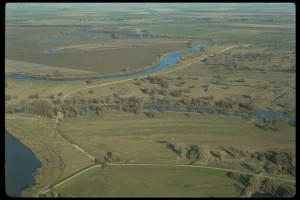

Are You Buying in a Flood Zone?
 Investing
in raw land over the last 11 years has taught me some hard lessons. The
1st lesson, is not to trust the tax assessors database. However, I
always thought that I could trust the flood designation. Unfortunately,
with FEMA changing the flood designations on an annual basis this is not
the case. With FEMA constantly changing the flood hazard maps, a
property that may have been designated outside of a floodplain a few
years ago may now actually be located within a hazardous boundary.
Investing
in raw land over the last 11 years has taught me some hard lessons. The
1st lesson, is not to trust the tax assessors database. However, I
always thought that I could trust the flood designation. Unfortunately,
with FEMA changing the flood designations on an annual basis this is not
the case. With FEMA constantly changing the flood hazard maps, a
property that may have been designated outside of a floodplain a few
years ago may now actually be located within a hazardous boundary.
So what can you do about this?
Buying a property in a high-risk flood zone could mean additional expenses including a flood survey as well as ongoing flood insurance. In addition to this, it could make the home more difficult to sell at some point in the future as a result of this designation (not to mention the expense and headache associated with a flooded property). Flood insurance alone can be anywhere from a few hundred dollars a year all the way up to a few thousand a year, depending on the flood zone category. The bottom line is any property purchase should be made with full knowledge and awareness of the property’s flood zone designation.
Going forward, we have implemented a policy in my office to run official flood certifications on any new properties we put under contract. Rather than rely on our local tax database or even some of the free flood zone sites online (which we have also found to be inaccurate), we have partnered with local lenders to run this for us . We also have an insurance agent that can run flood certs as well. Most investors have a good relationship with either an insurance agent or loan officer that would be willing to help in this area – don’t be afraid to utilize these relationships for this valuable information.
As an aside, if you do discover that a property you have purchased is in a flood plain, consider carefully what kind of flood insurance coverage you want. It may be that your lender requires flood insurance, but doesn’t necessarily dictate how much coverage you need. If this is the case and you feel confident that the property won’t flood, you may be able to elect to cover only the building (not contents), insure for a lesser dollar amount, or carry a higher deductible. In doing so, you can lessen the impact that flood insurance has on your cash flow by obtaining a policy with a smaller yearly premium.
For more information on the National Flood Insurance Program, check out the official government website at FloodSmart.gov. But even more importantly, make sure you have the ability to determine the flood zone of a property before you buy it. The last thing a real estate investor wants is a property with unexpected risk and expenses cutting into future profit.

Comments (1)
Or you can go to FEMA website and pull up the flood map for the area where the property is located and see if it's in a flood zone: https://msc.fema.gov/webapp/wcs/stores/servlet/FemaWelcomeView?storeId=10001&catalogId=10001&langId=-1
Luis, over 12 years ago